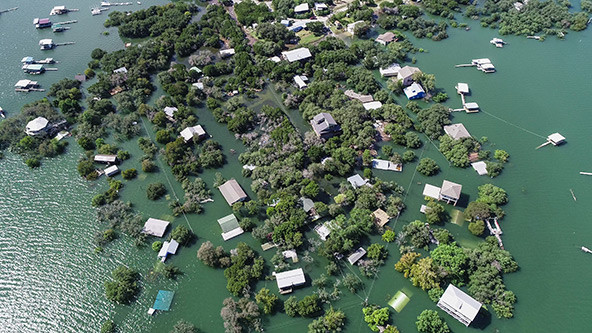 (Photo by iStock/RoschetzkyIstockPhoto)
(Photo by iStock/RoschetzkyIstockPhoto)
The most recent round of UN climate negotiations ended last month in Warsaw, and the outcome was familiarly inconclusive: Nations agreed to keep negotiating and making voluntary efforts to reduce emissions of greenhouse gases. After nineteen years of negotiations little has changed. Or has it?
Although the outcome of the negotiations has not changed significantly, the character of the problem has. Twenty years ago, the international community kicked off a process to address climate change with the UN Framework Convention on Climate Change. This 1992 convention set the goal of stabilizing the atmospheric concentrations of greenhouse gases to avoid “dangerous” change. In setting this goal, it established climate change as a simple pollution problem—where a dangerous level of contamination could be clearly defined and mechanisms for avoiding that level established. In 2009, in Copenhagen, UN climate negotiators adopted two degrees Celsius as the dangerous level of change, and since then, negotiations have focused on defining targets for reducing the global warming pollutants to avoid that level.
Characterizing climate change as a simple pollution problem may have helped focus the early policy negotiations, but things are different today. Populations across the globe are beginning to perceive the real or apparent effects of a changing climate. The climate threat is increasingly equated with present-day devastation wrought by storms, floods, wildfires, droughts, and heat waves, rather than abstract catastrophic threats such as a collapse of the West Antarctic ice sheet or the sudden shutdown of the thermohaline ocean circulation (dramatized in the 2004 science-fiction thriller The Day After Tomorrow). Climate has become the magnifying lens through which we view all other problems: food and water, national security, human health, and poverty. In short, the climate change narrative has changed. A greater number and diversity of actors are aware of and involved in addressing climate change; yet each is motivated by different concerns, driven by different values, and focused on different outcomes. For many, a rise of average global surface temperatures of two degrees Celsius is not a clear line between the acceptable and unacceptable impacts of climate; we are experiencing unacceptable affects from climate today.
The framework originally set in motion in 1992 is not up to the task of solving the climate problem of today. This was particularly evident during this year’s UN climate talks in Warsaw, where the issue of “loss and damage” threatened to bring the negotiations to halt. With Typhoon Haiyan as the backdrop, developing nations stood together and demanded payment for the loss and damages from climatic events impacting communities today, which the emissions of wealthy countries in the past may have influenced. While placing blame and seeking retribution for weather extremes will be difficult due to the challenges of attribution, incorporating the risks and impacts of current weather extremes into the definition of the climate problem is essential.
Are you enjoying this article? Read more like this, plus SSIR's full archive of content, when you subscribe.
Climate affects almost every aspect of humanity’s life support system: the air we breathe, the food we eat, and the water we drink. Averting the two-degree danger threshold will do little to ameliorate the climate stresses that communities are experiencing today, which are affecting water and food security, human health, and poverty. For many communities, the climate crisis is not about averting two degrees, but rather surviving the next drought or the next typhoon. As the impacts of the accumulation of heat-trapping gases continue to unfold, the distinction between the climate crisis of communities today and the climate change threats of the future will be purely academic. We need to stop making a distinction between the “natural” climate and the “changed” climate. We face a climate crisis that encompasses climate variability and change. Addressing this crisis requires moving the global economy off of fossil fuels, and building communities’ capacity to manage the climate risks that threaten health and human security across the globe. These solutions will take time. We must not let the urgency of the climate crisis blind us to the true nature of the problem.
It is time to restructure policy discussions of the climate problem from a simple pollution problem to a more complex risk-management problem. This will mean shifting the goal from averting a global catastrophe to minimizing global collective suffering. This will require: taking on the climate threat as a continuum of risks from variability to change; no longer debating whether any given weather event was the result of climate change; recognizing that stakeholders hold different values and risk perceptions; and addressing climate mitigation and adaptation as truly integrated and equal approaches to managing climate risks. By restructuring the climate challenge as minimizing collective suffering, we may open up new opportunities to address the multiple facets of the systemic risks posed by climate.
Support SSIR’s coverage of cross-sector solutions to global challenges.
Help us further the reach of innovative ideas. Donate today.
Read more stories by Leonard Sklar & Amy Luers.

